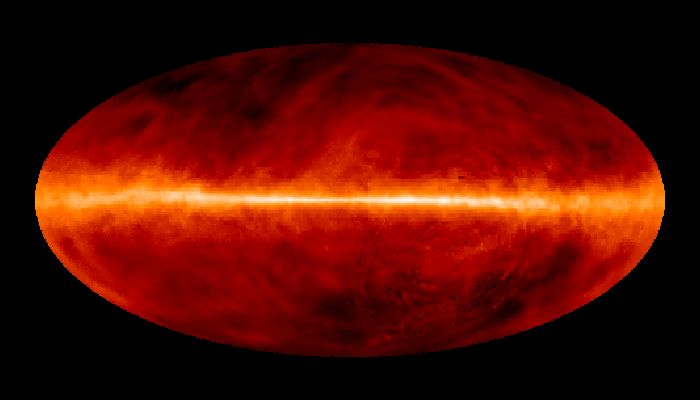EXPLORE: The Big Bang (BrainPop)
This book will explain the expansion of the universe, and how it led to the Big Bang Theory. It will also describe what happened and what the universe was like right after the Big Bang.
4. After the Big Bang

Map of hydrogen concentration in the Milky Way galaxy made by radio telescope. Picture courtesy of NASA. Public domain.
At the beginning, before the Big Bang, all the matter and energy in the universe was located in a single, densely-packed space (called a singularity). At the moment of the Big Bang all of that matter and energy began to expand. The universe at the time was extremely hot and dense(estimates are about 1012 degrees Kelvin). As the universe expanded, temperatures cooled, allowing for the formation of protons, neutrons and electrons. After a few minutes, the nuclei of atoms could form. It was not until about 380,000 years after the big bang that neutral atoms formed. The oldest radiation (light) in the universe, called the cosmic microwave background, also originated approximately 380,000 years after the big bang. The Wilkinson Anisotropy Probe (WMAP) has produced a detailed picture of how the early universe looked (you'll learn more about cosmic microwave background radiation next week). The first elements formed after the Big Bang were likely hydrogen and helium, because they are the simplest elements (least number of protons and neutrons in the atoms' nuclei). For a very long time, these elements were the only ones to exist in the entire universe.
As the universe grew older, it began to cool down. When the universe was about 700,000 years old it was cool enough for electrons to attach to the H and He nuclei, so heavier elements could form. The matter in the early universe was not smoothly distributed across space. Some parts of the universe were denser than others. These clumps of matter were held closely together by gravity. Eventually, matter in the universe became organized into stars, galaxies, planets, and other structures that we see in the universe today.